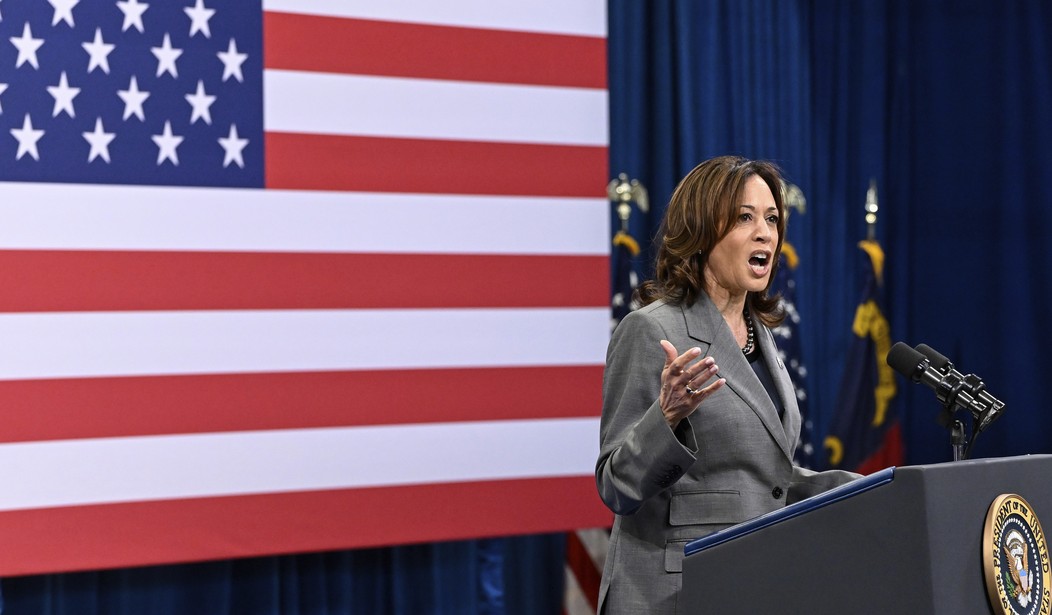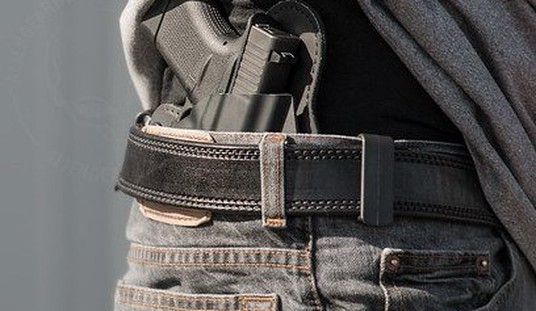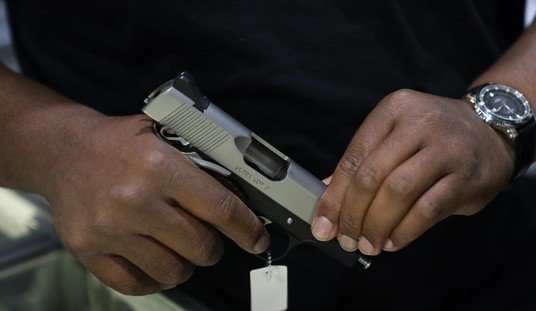As far as I'm concerned, Joe Biden couldn't have picked a better person than Kamala Harris to serve as the ostensible head of the White House Office of Gun Violence Prevention. She's deeply unpopular, incredibly awkward on the stump, and can't help but making outlandish claims that don't hold up to scrutiny. If Biden wants her to be the face of gun control in his administration, I'm just fine with that, especially when it leads to things like this.
At an event touting the Biden administration's efforts to curb gun violence, Vice President Kamala Harris said the vast majority of guns used in school shootings come from unsecured locations in homes.
On April 15 in Las Vegas, Harris said gun owners have a responsibility to secure firearms so children and young people can’t access them.
"Put it in a lockbox, because especially if a young person is just curious, or, you know, wants to play with a gun … let's not make it too easy to get," Harris said. "And that's what secure storage is about. You know, the numbers that I have seen suggest that as many as 75% of school shootings resulted from a gun that was not secured."
...
Harris’ statement contains an element of truth — the best available data suggests a relationship between unsecured guns at home and school shootings — but her statistic is off and ignores critical facts that would give a different impression. We rate it Mostly False.
That's right. The folks at Politifact actually dug into the statistics behind Harris's claim and found (surprise, surprise) that the VP was spouting nonsense during her recent gun control confab.
So how did Harris come up with that false figure?
The White House pointed PolitiFact to a 2019 U.S. Secret Service National Threat Assessment Center report on targeted school violence — planned incidents perpetrated by current or former students using weapons obtained for the specific purpose of causing others harm at school.
The study evaluated 41 incidents, 25 involving firearms. Nineteen of the shooters, or 76%, got their guns from homes. Twelve, or 48%, of the shooters obtained their weapons from what researchers considered to be "accessible" or "not secured in a meaningful way."
"You get to the 75% or 76% number by adding the firearms from homes where the guns had been locked up," said Daniel Webster, a distinguished research scholar at the Johns Hopkins Center for Gun Violence Solutions.
That's right. While touting storage mandates, Harris actually included incidents where firearms were stored securely but were still stolen by individuals who were plotting a school shooting.
This data point completely undercuts Harris's claim that storage mandates are effective at preventing attacks on campus. According to the Secret Service, there were almost as many incidents involving guns that had been locked up as there were incidents where guns were considered "accessible."
Is it a good idea for gun owners to store their firearms so that they're not accessible to any unauthorized users? Absolutely. But how we do that is best left to us. One-size-fits-all mandates laid down by government entities aren't the answer, especially when they make it impossible for gun owners to access their firearms if needed.
Garen Wintemute, director of the University of California, Davis’ Violence Prevention Research Program, said "secured" means that firearms are locked up and unloaded. "‘Locked up’ doesn’t have to mean locked inside something; there can be a lock placed on the firearm," he said, with the ammunition stored in a separate location.
"Hold on, Mr. Home Invader. I just need to run to the other room to load my pistol and then I'll be right with you." No thanks.
Some parents may feel completely comfortable allowing their children access to a firearm, and I've covered numerous incidents like this recent DGU in Texas where juveniles have defended themselves or their families from home invaders because their parents trusted them to be responsible around the guns in the home.
I've also been pretty open about the fact that there may be times where it's necessary to not just lock up guns but to temporarily remove them from the home; again, something that is best left to parents to decide based on their individual circumstances. Ultimately, keeping our kids safe around firearms involves teaching them the basics of real gun safety as well as being engaged in their lives so we can recognize when they're struggling and give them the help they need. Harris's data is way off, but so too are the demands of anti-gunners like Wintemute that the only way to "properly" store our guns is to render them useless for self-defense in the home.









Join the conversation as a VIP Member